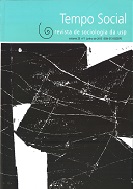The good child comes back home: Gobineau taking refuge in family hierarchy
DOI:
https://doi.org/10.1590/S0103-20702013000100012Keywords:
Hierarchy, Equality, Honour, Nineteenth CenturyAbstract
An extensive bibliography assigns Arthur de Gobineau with a central role in the development of racialist philosophy. This position arose largely from the repercussion of his Essai sur l'inégalité des races humaines (1853-1855). It is notable, though, that the work is much commented on, but little studied. An investigation of its background reveals that he does not elaborate a concept of race that different from that of lineage. His effort to construct a notion of 'race-species' collides with his apparent inability to escape from the 'race-lineage' model. This hypothesis is further substantiated when we compare his treatise on races with later works. In Les plêiades, published in 1872, he problematizes his racial perspective through the attempt to construct an individual hierarchy. However both the racial and individual approaches become dissipated in his fatalist pessimism. In his last work, Histoire de Ottar Jarl, published in 1879, he looks to combine these hierarchies - racial and individual. The book is a genealogical fantasy in which he places himself in a direct line of descent from the god Odin. With a tone of resignation, the fiction of his supposed origin summarizes his final attempt to found a distinction within the modern world: family hierarchy.Downloads
References
Andre, Sylvie. (1990), Gobineau: parcours mythiques d’une œuvre. Paris, Lettres Modernes.
Boissel, Jean. (1993), Gobineau: biographie (mythes et réalité). Paris, Berg International.
Boulainvilliers, Henri de. (1727), Histoire de l’ancien gouvernement de la France: avec xiv lettres historiques sur les parlements où états généraux. Disponível em <http://visualiseur.bnf.fr/ark:/12148/bpt6k87689j>, consultado em 3/8/2010.
Cassirer, Ernst. (1997), El mito del Estado. Cidade de México, Fondo de Cultura Económica.
Dreyfus, Robert. (1905), La vie et les prophéties du comte de Gobineau. Paris, Calman-Lévy.
Elias, Norbert. (2001), A sociedade de corte: investigação sobre a sociologia da realeza e da aristocracia de corte. Rio de Janeiro, Jorge Zahar.
Febvre, Lucien. (1998), Honra e pátria. Rio de Janeiro, Civilização Brasileira.
Foucault, Michel. (2002), Em defesa da sociedade: curso no Collège de France (1975-1976). São Paulo, Martins Fontes.
Gahyva, Helga. (2012), O inimigo do século: um estudo sobre Arthur de Gobineau (1816-1882). Rio de Janeiro, Mauad X.
Gaulmier, Jean. (1983a), “Introduction”. In: Gobineau, Arthur de. Œuvres. Paris, Gallimard, vol. 3, pp. ix-lx.
. (1983b), “Les pléiades: notice”. In: Gobineau, Arthur de.. Œuvres.Paris, Gallimard, vol. 3, pp. 929-1009.
. (1983c), “Les pléiades: notes et variantes”. In: Gobineau, Arthur de. Œuvres. Paris, Gallimard, vol. 3, pp. 1018-1168.
Gobineau, Arthur de. (1983a), Essai sur l’inégalité des races humaines. In: . Œuvres. Paris, Gallimard, vol. 1, pp. 133-1174.
. (1983b), Les pléiades. In: . Œuvres. Paris, Gallimard, vol. 3, pp. 3-302.
Le Bon, Gustave. (1910), Leis psychologicas da evolução dos povos. Lisboa, Typografia de Francisco Luiz Gonçalves.
Lepenies, Wolf. (1996), As três culturas. São Paulo, Edusp.
Montesquieu, Charles Secondant de. (2000), O espírito das leis. São Paulo, Martins Fontes.
Morland, Jacques. (1905), “Gobineau romancier: ‘Les pléiades’”. Mercure de France, Paris, 55 (189): 5-21, maio.
Moussa, Serga. (2003), “Introdution”. In: (dir.). L’idée de race dans les sciences humaines et la littérature (xviie et xix siècles): Actes du Colloque International de Lyon (16-18 novenbre 2000). Paris, L’Harmattan, pp. 7-16.
Raeders, George (org.). (1938), D. Pedro ii e o conde de Gobineau: correspondências inéditas. São Paulo, Cia. Editora Nacional.
Remi-Giraud, Sylvianne. (2003), “Le mot race dans les dictionnaires français du xixe siècle”. In: Moussa, Sarga (dir.). L’idée de race dans les sciences humaines et la littérature (xviie et xix siècles): Actes du Colloque International de Lyon (16-18 novenbre 2000). Paris, L’Harmattan, pp. 203-221.
Seilliere, Ernest. (1903), Le comte de Gobineau et l’arianisme historique. Paris, Plon.
Tocqueville, Alexis de. (1959), Œuvres complètes: correspondance d’Alexis de Tocqueville et d’Arthur de Gobineau. Paris, Gallimard, vol. 9.
. (1998), A democracia na América: leis e costumes. São Paulo, Martins Fontes.
_____. (2000), A democracia na América: sentimentos e opiniões. São Paulo, Martins Fontes.
Downloads
Published
Issue
Section
License
Copyright (c) 2015 Tempo Social

This work is licensed under a Creative Commons Attribution-NonCommercial 4.0 International License.


